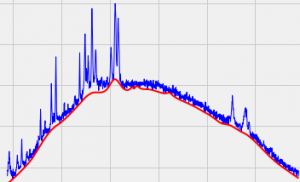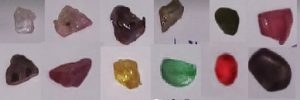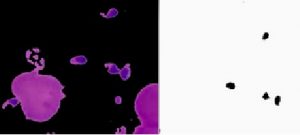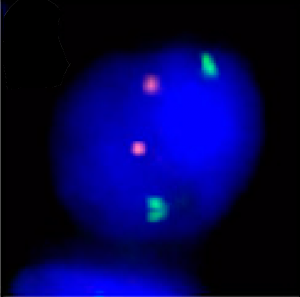Below is a list of projects undertaken by ALOeKA. Student teams work on each project under the supervision and mentorship of our researchers.
Feasibility of using deep learning techniques such as U-Nets for Raman spectral denoising is investigated alongside classical methods such as improved asymetric least squares. Raman spectral processing pipelines featuring Principal Component Analysis (PCA) and Singular Value Decomposition (SVD) are also being developed, Cluster analysis methods using Gaussian Mixture models is currently studied for PCA results of Raman spectra obtained for ongoing research problems.
Read more

Coconut oil is one of the main cooking oils used in Sri Lanka. Cocunut based industry also is a main export earner. In this project Raman based chemometrics are developed to aid in-situ detection of coconut oil adulteration (with palm oil) and feasibility will be evaluated to sense aflotoxins in coconut oil.
Read moreSri Lanka is renowned for its magnificent gems. In this project Sri Lankan gems are characterized for its internal mineral signatures, inhomogeneities and potential treatments.
Read more

Surface plasmon resonance (SPR) sensors are now finding many novel applications. The technology can be now developed for in-situ detection of molecules at low concentrations. In this project a SPR sensor working under the Kretchmann Geometry is developed with potential applications in Gluocose detection.
Read moreLeishmaniasis is a chronic inflammatory parasitic disease transmitted through the bite of infected sandflies. Visceral (VL), Cutaneous (CL) and Mucocutaneous (ML) are the 3 major forms of the disease which affects around 1 million annual new cases globally. The disease is most prevalent among the poor and shows association with malnutrition, population displacement, poor housing and weak immunity. Prevalence of Leishmaniasis has seen a gradual increase in Sri lanka with over 200,000 annually recorded patients at different disease stages. Therefore, early diagnosis and effective case management will help significantly reduce the disease prevalence and associated disabilities including death. Clinical features of skin lesions, microscopic examination of skin lesion, splenic /bone marrow/lymph node aspirates, and molecular diagnostics based on PCR are used for differential diagnosis of the disease. Advancements in diagnostics, chemotherapeutics and vector control are critical for effective management and control of this infection.The disease progression of VL is considered serious and if untreated leads to systemic and progressive infection of macrophages in the reticulo-endothelial systems or lymphoid organs (spleen, liver and bone marrow). Clinical manifestations of VL include hepatosplenomegaly, fever, anemia, leucopenia, hypergammaglobulinemia and cachexia. Parasitologic diagnosis is still considered the gold standard in Leishmaniasis diagnosis because of its…
Read more
In this project reduced graphene oxide (rGO) wrapped Cuprous Oxide based composite having photocatalytic bahaviour is studied for potential surface enhanced Raman spectroscopy sensing of analytes such as gluocose. The study will look at how the photocatalytic behavior of the composite and the functionality rGO can be used for quantification of reactive by products.
Read moreGold nanoparticles are frequently used for Surface Enhanced Raman spectroscopy. In this project spherical Au nanoparticles of size scales 20 - 40 nm are synthezised and conjugated with antibodies to detect Creatinine.
Read more

In this project analytics for fluorescence in-situ hybridization (FISH) images are developed primarily with an aim of detecting chromosomal abberations related to genetic disorder related 'Williams Syndrome'.
Read more